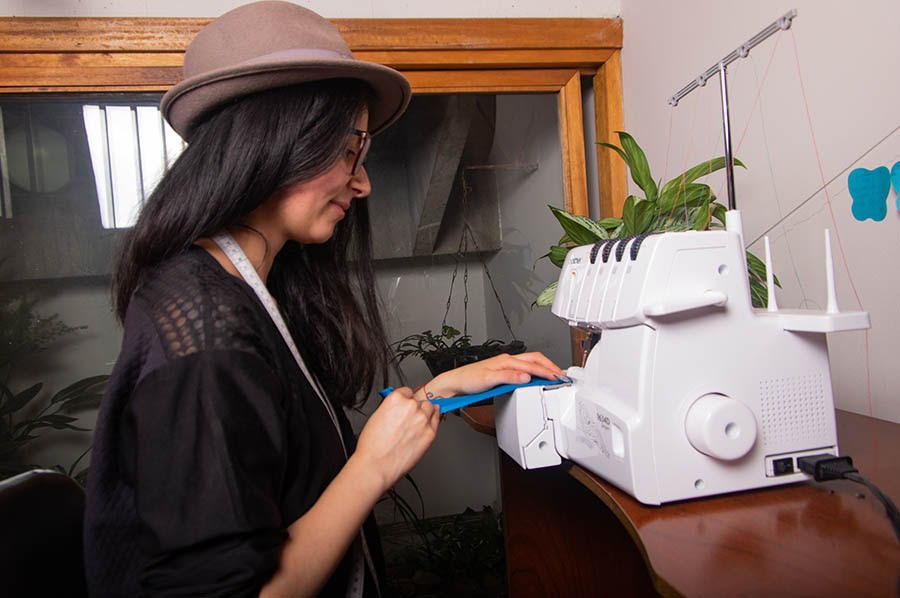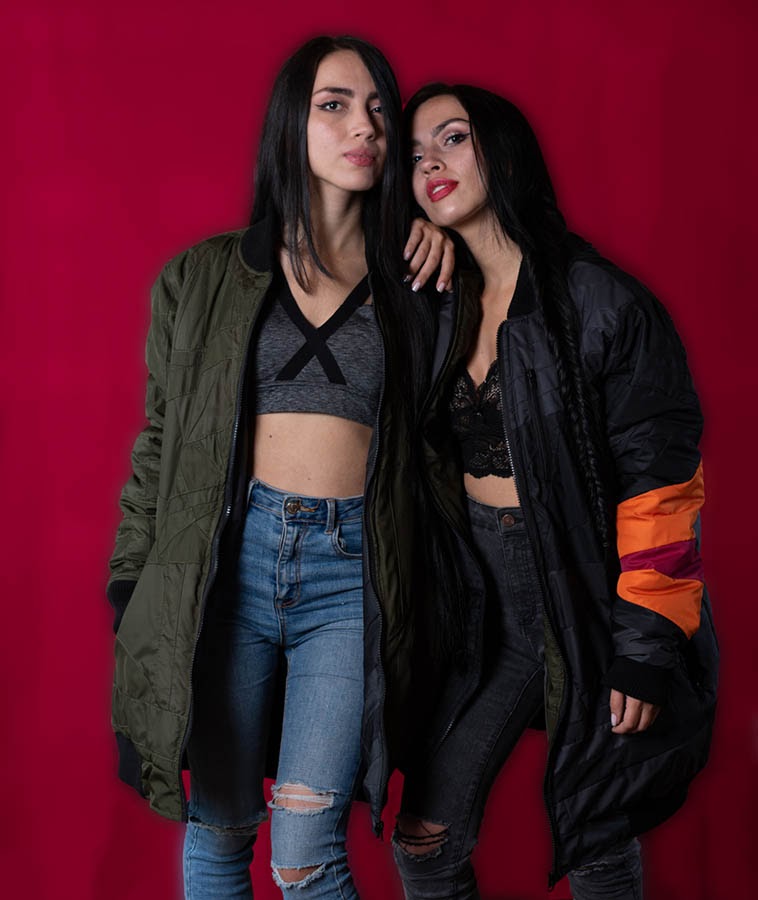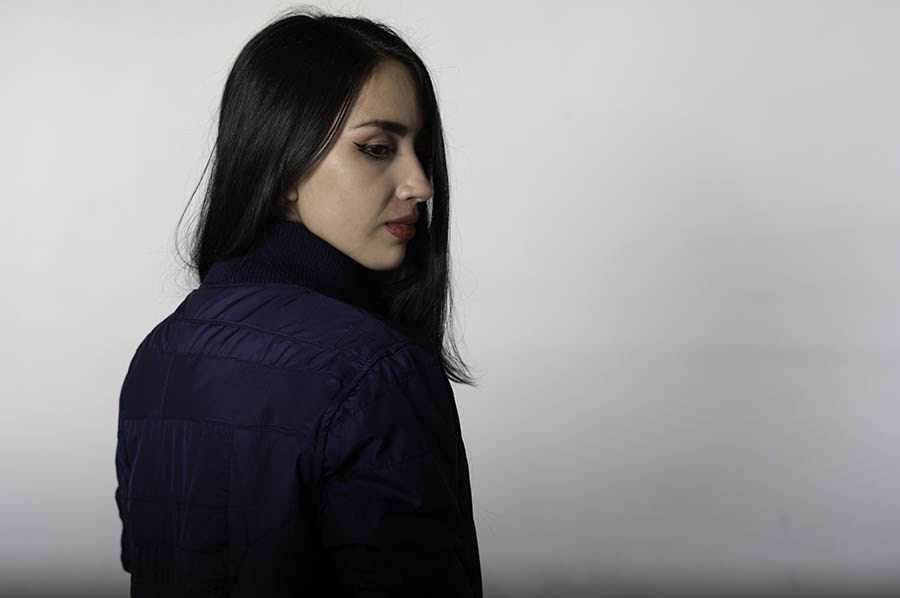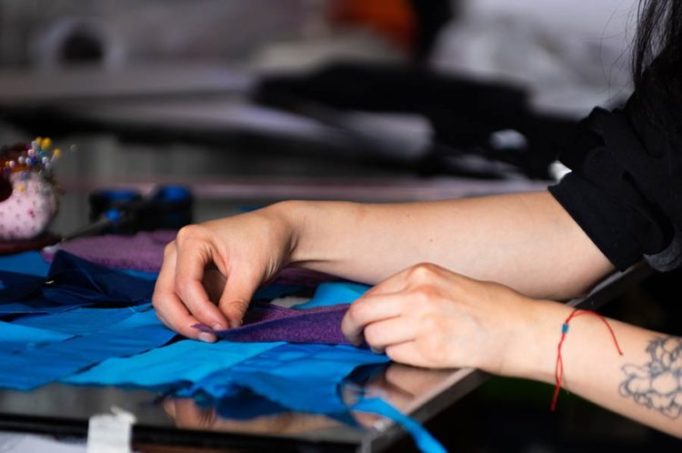Так звана індустрія швидкої моди — яка переносить моду з подіумів у магазини дешевого одягу — означає, що більше модного одягу виробляється швидше і дешевше. Це також означає, що коли тренди змінюються або дешева тканина швидко зношується, багато чого потрапляє на звалище — близько 85% усіх текстилів, що виробляються щорічно, опиняються на сміттєзвалищі.
Перелік екологічних порушень індустрії триває: викинутий одяг сприяє забрудненню океану мікропластиком. Створення швидкої моди виробляє більше вуглецевих викидів, ніж міжнародні авіаперельоти та морські перевезення разом узяті. Для виробництва однієї пари джинсів потрібно 2000 галонів води.
Досить цього, каже Клавдія Мартінес Пуерто.
«Мода є частиною життя кожної людини, і це одна з найбільш забруднюючих галузей у світі», — каже Мартінес. «Однією з проблем індустрії є кількість відходів, які вона генерує».
У 2015 році Мартінес заснувала Les Common People, колумбійський бренд одягу, стилізований як “інді-бренд одягу для інді-жінок”. Коли Мартінес краще познайомилася з індустрією моди — включаючи її прислівний відходи та, часом, сумнівні ланцюжки постачання, переповнені низькою оплатою і поганими умовами праці — вона вирішила внести деякі зміни.
«У 2018 році ми вирішили змінити концепцію бренду і зосередитися на екологічній стійкості та розробці продуктів із текстильних відходів», — каже Мартінес. Les Common People використовує знехтувані текстильні матеріали, включно з відходами від виробників одягу, для того, щоб переробити їх і зшити унікальні речі від курток до штанів. Усі шви виконуються місцевими жителями країни, що дає Les Common People контроль над умовами праці.
Martinez покладалася на DreamHost для підтримки свого входу в світ електронної комерції — і її мети створення більш сталого майбутнього. «Завдяки переробці ми можемо почати бути частиною змін, яких прагне людство: люди, які турбуються про екологічний та соціальний вплив, який вона створює», — каже вона.

Ми підтримуємо вашу мрію
Будь-які ваші цілі в інтернеті, DreamHost буде поруч з вами, переконуючись, що ваш сайт швидкий, безпечний і завжди працює. Плани починаються з $2.59/міс.
Стиль та сталість
Martinez народилася та виросла в Боготі, Колумбія, і сьогодні керує Les Common People у своєму рідному місті.
«Ця країна повна натхнення», — каже вона. «Її ландшафти неповторні; її люди дуже особливі, і хоча Богота — досить хаотичне місто, в ньому є дійсно красиві місця, і ви можете знайти всілякі речі».
Martinez розпочала свою кар’єру як фрілансер у сфері реклами, створюючи та шивши власний одяг як хобі, перш ніж заснувати Les Common People. Вона співпрацює з іншими колаборантами для допомоги у фотографії, дизайні та бухгалтерії.
«Я хотіла, щоб люди відчували себе в одязі так, як я відчувала себе в одязі, який я створила для себе. Це був момент, коли я вирішила започаткувати власний модний бренд», — каже вона.

Сьогодні вона проєктує та навіть шиє деякий одяг для Les Common People, черпаючи натхнення у мистецтві, музиці та кіно. Назва її компанії, яка поєднує англійську з її рідною іспанською, відображає власну філософію моди Мартінес та чому вона хотіла спочатку увійти в цю індустрію.
«Назва бренду виникла з ідеї, що всі люди є однаковими, і ми висловлюємо себе через одяг, який ми носимо. Ми – «звичайні люди», повні оригінальності та унікальності, люди, які використовують одяг, який ми носимо, як спосіб дати світу знати, хто ми є.»
Але вираження вашої індивідуальності за допомогою красивого та стильного одягу, каже вона, не повинно руйнувати довкілля.
“На ринку, повному брендів швидкої моди, знайти унікальні, автентичні та дизайнерські вбрання є майже неможливим завданням, тому в Les Common People ми вирішили створювати унікальні вбрання з апсайклінгу абсолютно нових текстильних відходів,” вона каже. “Ми додаємо цінність тканинам, які були відходами для інших; ми перетворюємо 100% нових текстильних відходів у вбрання.”
Ця стратегія — створення речей, які не тільки відрізняються від того, що ви знайдете в магазині, але які виготовлені та розроблені індивідуально, використовуючи доступні відходи тканини для створення образу, якого буквально немає ніде інде — створює ідеальне поєднання стилю та сталості. І цей союз призводить до протилежності швидкій моді: ручно виготовлені, якісні одяги, призначені виглядати чудово протягом багатьох років.
«Змішуючи дизайн з цінностями сталого розвитку, ми досягли середини, яку шукали,» – каже Мартінес. «Ми пропонуємо продукт зі стилем і дизайном бренду, продукт, який допоможе пом’якшити екологічну проблему, створену цією індустрією, і який був розроблений з повагою до всіх ланок нашого виробничого ланцюга.»
Попит та пропозиція
Ще одним з пріоритетів Мартінеса є очищення ланцюга постачання. Недорогий, модний одяг, що прикрашає полиці багатьох західних магазинів, часто виробляють робітники в Китаї, Індії та інших країнах, переважно жінки та дівчата, багато з яких працюють довгі години в небезпечних умовах за таку мізерну платню, як 15 центів на годину.
Щоб переконатися, що її одяг виготовлений якісно та етично, Мартінес співпрацює на місцевому рівні для створення свого асортименту.
“Ми віддаємо виробництво одягу на аутсорсинг малим виробникам у Боготі, де розташований наш бренд,” – пояснила вона. “Як бренд зі сталими цінностями, ми змогли створити дизайнерський одяг з перероблених матеріалів. А виробляючи локально, ми можемо контролювати умови праці людей, які роблять можливим весь наш одяг.”
Джерелом її одягу є нові текстильні відходи — тобто не використані тканини, які інакше були б викинуті на звалища. Сировина диктує, над якими проєктами можуть працювати Мартінес та її співпрацівники, і змушує вносити креативність у дизайн. Результатом є унікальний лоскутний вигляд її одягу, що поєднує доповнюючі візерунки та текстури.
«Використовуючи відходи інших, ми маємо можливість розвивати нашу креативність через різні форми, текстури, рельєфи та дизайни, які надають нам текстильні відходи, і з цим створювати унікальний одяг,» говорить Мартінес.
Відходи тканин також впливають на асортимент у запасах. Наразі в магазині Les Common People ви знайдете куртки та пуловери на розпродажу — оскільки колекцію створено на основі матеріалів, які були доступні в той момент.
Martinez та її команда наразі зайняті виробництвом своєї наступної колекції, яка включатиме сорочки та штани, розроблені для ідеального поєднання з верхнім одягом. Крім сталого виробництва та ланцюга постачання, продукція Martinez вирізняється своїм дизайном.
“Наші продукти визнані як одяг зі стилем та дизайном, який цінується за свою оригінальність, а також як легкий для інтеграції в гардероб наших клієнтів.”
Виклики та Тріумфи
Ведення та управління малим бізнесом їй підходить, каже Мартінес — навіть з урахуванням довгих годин, які це вимагає від неї.
“Мені подобається незалежність, яку дає власний бізнес — контроль над власним часом та можливість працювати так, як вам подобається,” — каже вона. “Хоча ви можете думати, що працювати самостійно буде спокійнішою роботою, це не так. Іноді доводиться працювати у 10 разів більше, але це дійсно винагороджує, коли ви бачите результати роботи над власним проектом.”

Робоче навантаження було викликом, особливо на початкових етапах Les Common People, але залучення сторонньої допомоги дало змогу Мартінес вдосконалити свої сильні сторони. Вона навчилася відпускати деталі та зосереджуватися на загальній картині.
“Коли у вас малий бізнес, зазвичай ви робите майже все самі, і це не просте завдання,” — каже вона. “Для мене було важко допустити людей і отримати допомогу для виконання робіт. Я думала, що можу зробити все сама, і я так помилялася. Хоча я хотіла робити все і контролювати кожен маленький процес, щоб все було зроблено найкращим чином, це було неможливо, і я виснажувала себе. Тепер, коли у мене є деякі співробітники, я можу зосередитись на дизайні та управлінні — речах, у яких я добра.”
Martinez змогла перетворити Les Common People на постійне місце роботи останніми роками. “Я люблю те, що мені вдалося досягти,” – каже вона. Тепер вона з нетерпінням чекає продовження розвитку бізнесу та створення більшої команди.
Звичайно, досвід Мартінес в рекламі став її перевагою, “з усім цим спілкуванням бренду та як працювати з дошками натхнення та перетворювати ідеї в реальність”, – каже вона.
І клієнти дійсно зв’язуються з брендом, каже Мартінес. Вони відчувають, що дійсно можуть підтримати соціальну місію її марки одягу — а стиль і дизайн теж не зашкодять. Вони особливо визнають кожну річ за час, який потрібен для її ручного створення — наприклад, оверсайз бомбер у колекції Les Common People вимагає більше 10 годин шиття для виготовлення.
«Люди люблять нашу оригінальність та інноваційність продуктів, а також те, як легко їх можна комбінувати з різними видами одягу,» – каже вона. «Соціальна та екологічна спрямованість нашого бренду також дуже цінуються нашими клієнтами, які шукають способи зробити добрий вплив на світ, і вони знаходять це у нашому бренді.»
Пов’язано: Створюєте власний бізнес-сайт? Не допускайте цих 10 помилок
Поширення інформації
Les Common People — це інтернет-магазин без стаціонарного місця продажу. Ярмарки та інші живі заходи виставляють одяг перед покупцями, щоб вони могли побачити його та відчути на дотик. В іншому випадку, бренд покладається на зв’язок з потенційними клієнтами в Інтернеті та через соціальні медіа.
“Ми любимо чути, що наші клієнти говорять про наш бренд та продукти,” — каже вона. “Через соціальні мережі ми зв’язуємось з нашими клієнтами та потенційними клієнтами, а на нашому сайті вони можуть знайти всі продукти, тому перехід з Instagram на наш сайт дуже простий, наприклад.”
Пов’язано: 10 простих порад щодо соціальних медіа для вашого наполегливого малого бізнесу
Веб-сайт Les Common People простий і лаконічний, а головна сторінка відразу веде до їхнього магазину — це свідомий вибір Мартінеса.
«Те, що нам подобається в нашому вебсайті, це те, що він дійсно чистий, тому клієнти можуть зосередитись на наших продуктах», – каже вона. «Хоча це базовий сайт, навігація по ньому та зв’язок з нами, якщо наші клієнти цього бажають, дуже прості. Основне, що ми хочемо, щоб наші клієнти знайшли, це наші продукти, і це перше, що вони бачать, коли заходять на сайт.»
Вона усвідомлює, що в майбутньому є місце для подальшого розвитку сайту та використання його як платформи для розповіді більше про історію компанії, але наразі він зосереджений на демонстрації їхніх продуктів світу.

Martinez використала WordPress, розміщений на DreamHost, для створення свого вебсайту. Це потужне поєднання, каже вона, допомогло їй легко увійти в будівництво електронного бізнесу, який так сильно залежить від свого вебсайту для продажів.
«DreamHost має дуже зручну панель керування, легкий у використанні, форум підтримки дуже повний, а обслуговування клієнтів відмінне», — каже вона. «План хостингу WordPress насправді допоміг мені побудувати, розвинути та керувати моїм сайтом.»
Зміна нашого одягу, зміна світу
Наразі Les Common People відправляє товари лише по Колумбії. Вартість доставки за межі країни висока, і як малому бренду, вони наразі зосереджені на локальному зростанні. У майбутньому вони планують здійснювати відправлення по всьому світу.
Для покращення своєї роботи з Les Common People — та для чистого особистого задоволення — Мартінес вивчає ремісничі техніки фарбування, такі як мармурова тканина та фарбування текстилю натуральними пігментами. “Мені дуже подобається вчитися новому, що я можу використовувати у своєму особистому та професійному житті”, – каже вона.
Вона також завжди шукає нові способи підтримки місії свого бренду щодо сталості у моді.
“Ми хочемо продовжувати створювати унікальний одяг з перероблених тканин, вивчати нові техніки, щоб утримувати сотні кілограмів нової тканини від потрапляння на звалища, та продовжувати наш шлях до сталості не тільки з брендом, а й з нашим життям,” каже Мартінес.
З цими змінами в її та інших брендах, а також зростаючою обізнаністю про екологічну шкоду від швидкої моди, Мартінес оптимістично дивиться в майбутнє моди — і сподівається, що її клієнти та інші зроблять відповідальний вибір щодо покупки та носіння одягу.
«Ми всі можемо бути частиною змін і одягатися, не впливаючи на планету та її мешканців», — каже вона. «Світ змінюється; спосіб, яким ми одягаємося, також повинен змінитися.»
